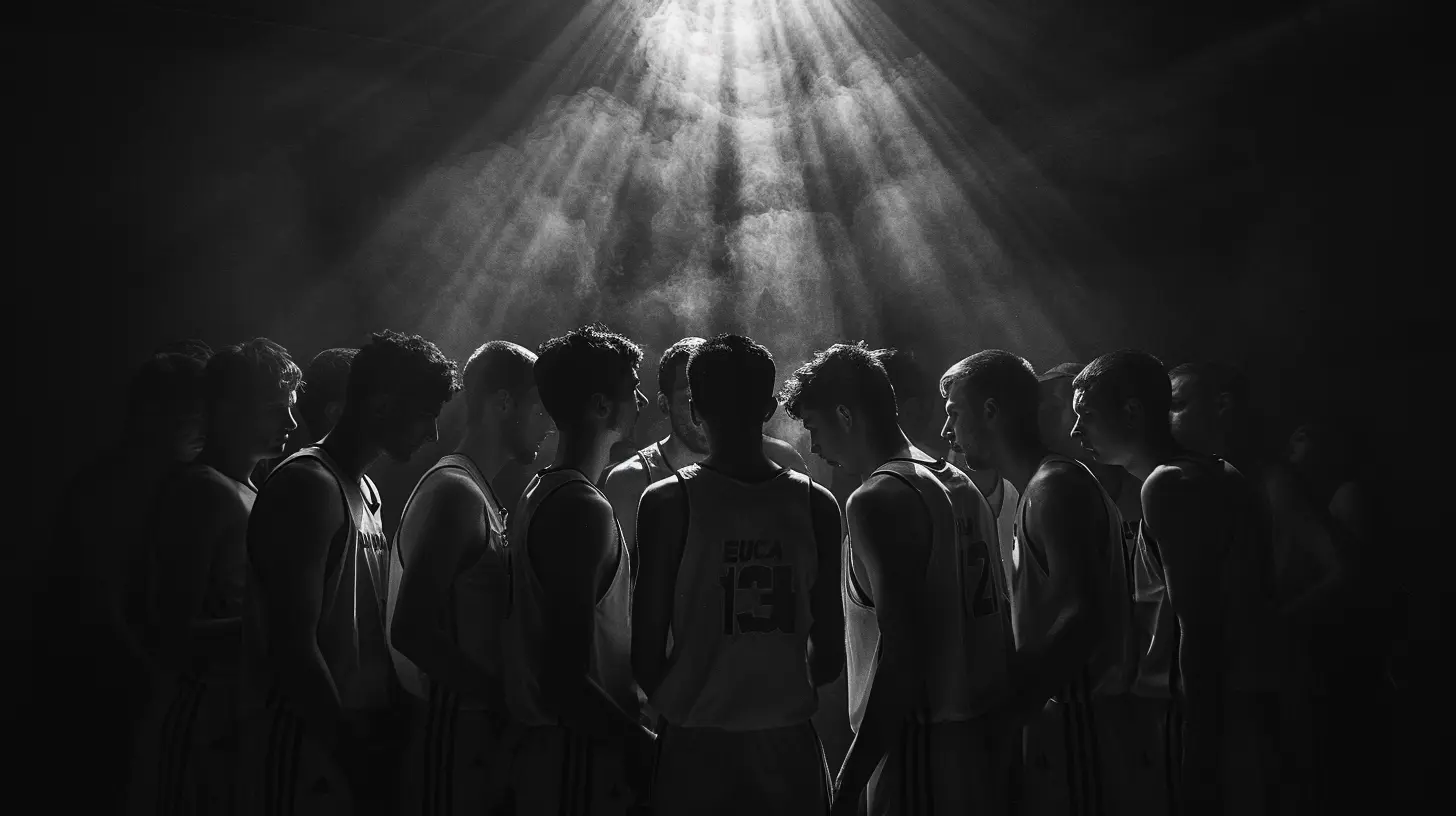The Psychology of Team Dynamics: What Every Coach Should Know
8 August 2025
Team sports aren't just about physical prowess and tactical strategies. Sure, a well-executed play is essential for success, but what about the underlying forces that drive a team to function smoothly? That's where team dynamics come in. Whether you’re coaching a local high school soccer team or a professional basketball squad, understanding the psychology of team dynamics can be your secret weapon. It's like the invisible thread that weaves everything together, and the better you understand it, the better your team will perform.
In this article, we'll dive into the fascinating world of team psychology. We'll explore why some teams click effortlessly while others struggle, and more importantly, what every coach should know to foster positive team dynamics.

What Are Team Dynamics?
Let's start with the basics. Team dynamics refer to the unconscious, psychological forces that influence a team's behavior. Think of team dynamics as the "chemistry" of the group—how players interact, communicate, and work together toward a common goal. Some teams just seem to have that magic, right? They’re in sync, they anticipate each other’s moves, and they trust one another. Other teams? Not so much. They experience friction, confusion, and even conflict.But here's the kicker: team dynamics can be shaped, molded, and influenced. And as a coach, you play a crucial role in this process.
Why Should Coaches Care About Team Dynamics?
You might be thinking, "Isn't my job just to teach skills and strategies?" Well, yes… and no. While skills and strategies are undeniably vital, they’re only part of the equation. You could have the most talented roster, but if your players aren’t working together, your team will likely struggle.Team dynamics can make or break a season. They affect everything from communication and decision-making to motivation and overall performance. If you’re not paying attention to the psychological and emotional undercurrents within your team, you’re missing a huge piece of the puzzle.

The Key Elements of Team Dynamics
Let’s break down the essential components that comprise team dynamics. Understanding these elements will help you identify potential issues and, more importantly, develop strategies to enhance your team’s cohesion. It's like knowing the ingredients in a recipe—once you understand what goes into it, you can adjust things to make it just right!1. Communication
Good communication is the backbone of any successful team. Without it, you're basically playing a guessing game. Whether it's verbal or non-verbal, communication allows players to share ideas, provide feedback, and resolve conflicts.But communication isn’t just about talking. It’s about listening. A team that listens to one another can solve problems faster and make more informed decisions on the field or court. Coaches, this applies to you too! It’s important that you foster an environment where players feel comfortable expressing their thoughts and concerns. When players feel heard, they’re more likely to engage and invest in the team’s success.
2. Trust
Trust is like the glue that holds a team together. Without it, everything starts to fall apart. Players need to trust each other to execute plays, make decisions, and have each other’s backs—both on and off the field.But here’s the thing about trust: it can’t be forced. It has to be earned over time through consistent behavior. As a coach, you can encourage trust by fostering transparency, encouraging accountability, and setting a positive example. Trust-building exercises and open communication are great tools to help your players develop trust in one another.
3. Roles and Responsibilities
Every player on your team has a specific role, whether they’re a striker, goalie, point guard, or quarterback. But beyond their formal positions, players also take on informal roles that can influence team dynamics. These can range from the "motivator" who pumps everyone up, to the "strategist" who analyzes plays, or even the "joker" who lightens the mood during tense moments.As a coach, it’s essential to recognize these roles and ensure that they’re balanced. If one player dominates or takes on too many responsibilities, it can cause friction. Make sure everyone knows their role and feels valued within the team structure.
4. Conflict Resolution
Conflict is inevitable in any team setting, but how your team handles it can make all the difference. A little bit of tension isn’t necessarily a bad thing—it can even fuel motivation and drive. However, unresolved conflict can lead to divisions within the team, and before you know it, cliques form, and team chemistry suffers.Encouraging open dialogue and creating a safe space for disagreements is critical. Teach your players that conflict isn’t something to fear, but rather an opportunity for growth. Help them develop conflict-resolution skills, so they’re better equipped to handle challenges as they arise.
5. Cohesion
Cohesion refers to how united your team is toward achieving a common goal. This is where "buying into the system" comes into play. When players are on the same page, they work more effectively together.But cohesion doesn’t just happen overnight. It requires ongoing effort, team bonding activities, and a shared sense of purpose. As a coach, you play a pivotal role in creating this sense of unity.

The Psychology Behind Team Dynamics
Now that we’ve covered the elements of team dynamics, let's dig into the psychological principles that underpin these dynamics. Understanding the psychology at play can help you take your coaching strategy to the next level.Social Identity Theory
Social Identity Theory suggests that individuals derive part of their self-concept from the groups they belong to. In the context of sports, players gain a sense of identity through their membership in the team. This can be a powerful motivator, as players are not only playing for themselves but also for the "in-group"—the team.As a coach, you can leverage this psychology by fostering a strong team identity. Encourage team rituals, create shared goals, and build a sense of pride around being part of the team. The more your players feel connected to the group, the more committed they’ll be to its success.
Groupthink vs. Diversity of Thought
Groupthink occurs when team members prioritize harmony and consensus over critical thinking. While it’s essential for teams to be united, groupthink can stifle creativity and lead to poor decision-making. Think of it like everyone agreeing to do something just to avoid conflict, even if it’s not the best choice.On the flip side, a diverse range of thoughts and perspectives can lead to more innovative solutions. As a coach, it’s your job to strike a balance. Encourage collaboration but also promote diverse viewpoints. Sometimes the best plays come from thinking outside the box!
The Power of Positive Reinforcement
Ever heard the saying, “You catch more flies with honey than with vinegar”? The same applies to coaching. Positive reinforcement—praising players for their efforts, acknowledging improvements, and celebrating small victories—can do wonders for team morale.When players feel appreciated, they’re more likely to stay motivated and contribute positively to the team dynamics. On the flip side, constant criticism can lead to low morale and disengagement. So, while constructive feedback is important, don’t forget to sprinkle in some positivity.

How to Cultivate Healthy Team Dynamics
Alright, now that you’re familiar with the key elements and psychology of team dynamics, how do you actually go about building a healthy team environment? Here are some practical tips:1. Foster Open Communication
Create an environment where players feel comfortable sharing their thoughts, concerns, and ideas. Hold regular meetings or "team huddles" where everyone has the opportunity to speak up. This not only improves communication but also helps to prevent misunderstandings and conflicts.2. Build Trust Through Team Activities
Trust doesn’t develop overnight. Incorporate team-building exercises that promote collaboration and trust. These don’t have to be grand gestures—simple activities like group discussions, problem-solving tasks, or even social outings can help strengthen bonds.3. Define Clear Roles and Responsibilities
Make sure every player knows their role within the team. When players understand what’s expected of them, they’ll be more focused and less likely to step on each other’s toes.4. Encourage Accountability
Hold players accountable for their actions, but also offer support when necessary. If a player makes a mistake, use it as a learning opportunity rather than a chance to criticize. Accountability, paired with understanding, fosters a culture of growth and improvement.5. Celebrate Team Successes
Whether it’s winning a game or simply executing a great play, make sure to celebrate team successes. This not only boosts morale but also reinforces the idea that everyone’s contributions matter.Wrapping It Up
The psychology of team dynamics is a crucial, yet often overlooked, part of coaching. As a coach, understanding how your team interacts, communicates, and works together is just as important as teaching them how to play the game. Remember, a team that functions well together off the field will perform better on it.So, the next time you're thinking about how to improve your team’s performance, don’t just focus on drills and tactics. Take a step back and consider the psychological forces at play. By fostering trust, communication, and cohesion, you’ll set your team up for lasting success.
all images in this post were generated using AI tools
Category:
Team SportsAuthor:

Ruben McCloud
Discussion
rate this article
1 comments
Reagan McGowan
Team dynamics? More like team drama! Coaches, if you can't handle personalities, maybe stick to solo sports. Winning isn't just strategy; it's knowing your players' quirks!
August 27, 2025 at 11:29 AM

Ruben McCloud
You make a great point! Understanding team dynamics goes beyond strategy—it's essential to recognize and manage individual personalities for a cohesive, successful team.


